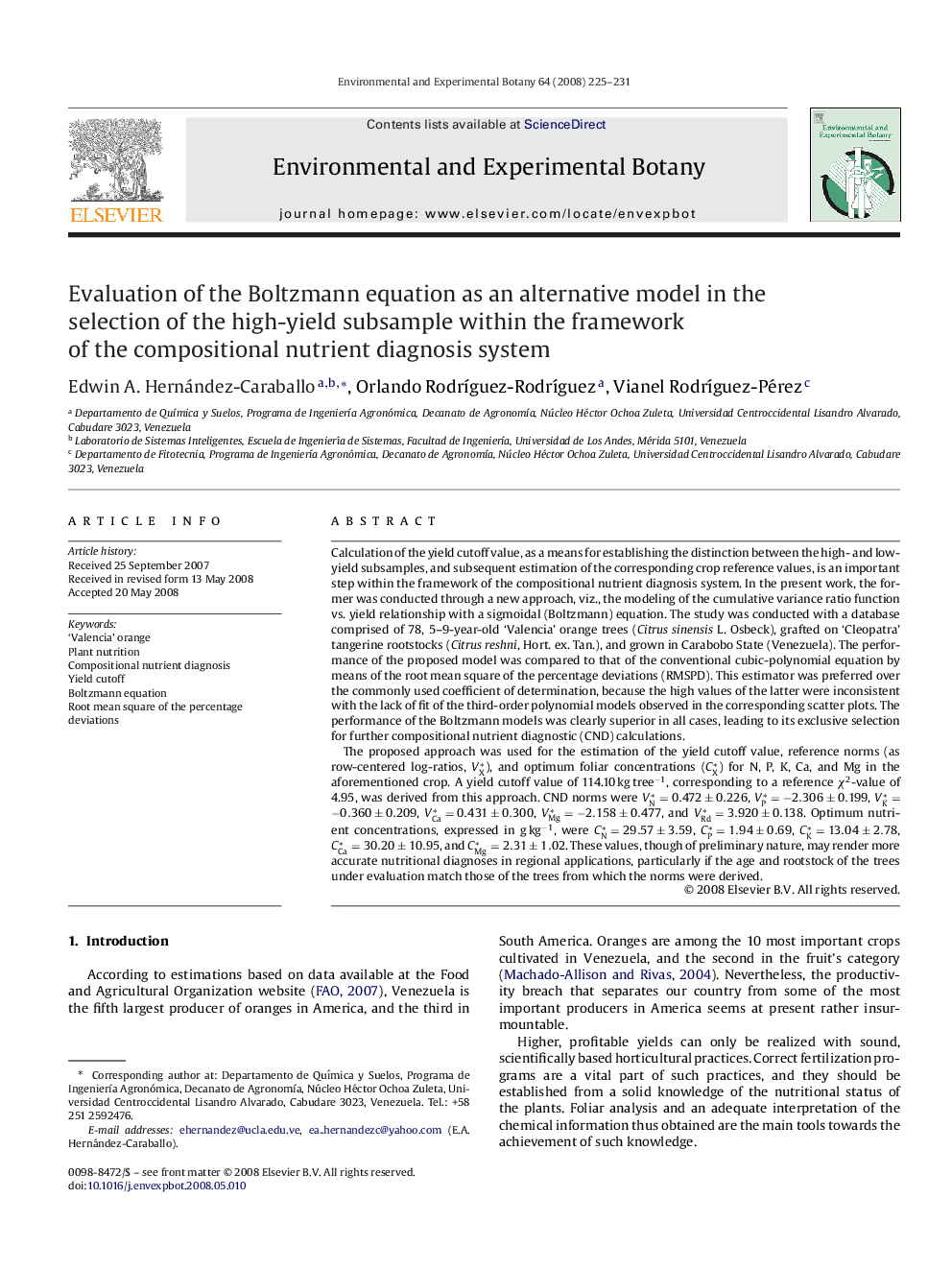| Article ID | Journal | Published Year | Pages | File Type |
|---|---|---|---|---|
| 4555322 | Environmental and Experimental Botany | 2008 | 7 Pages |
Calculation of the yield cutoff value, as a means for establishing the distinction between the high- and low-yield subsamples, and subsequent estimation of the corresponding crop reference values, is an important step within the framework of the compositional nutrient diagnosis system. In the present work, the former was conducted through a new approach, viz., the modeling of the cumulative variance ratio function vs. yield relationship with a sigmoidal (Boltzmann) equation. The study was conducted with a database comprised of 78, 5–9-year-old ‘Valencia’ orange trees (Citrus sinensis L. Osbeck), grafted on ‘Cleopatra’ tangerine rootstocks (Citrus reshni, Hort. ex. Tan.), and grown in Carabobo State (Venezuela). The performance of the proposed model was compared to that of the conventional cubic-polynomial equation by means of the root mean square of the percentage deviations (RMSPD). This estimator was preferred over the commonly used coefficient of determination, because the high values of the latter were inconsistent with the lack of fit of the third-order polynomial models observed in the corresponding scatter plots. The performance of the Boltzmann models was clearly superior in all cases, leading to its exclusive selection for further compositional nutrient diagnostic (CND) calculations.The proposed approach was used for the estimation of the yield cutoff value, reference norms (as row-centered log-ratios, VX*), and optimum foliar concentrations (CX*) for N, P, K, Ca, and Mg in the aforementioned crop. A yield cutoff value of 114.10 kg tree−1, corresponding to a reference χ2-value of 4.95, was derived from this approach. CND norms were VN*=0.472±0.226, VP*=−2.306±0.199, VK*=−0.360±0.209, VCa*=0.431±0.300, VMg*=−2.158±0.477, and VRd*=3.920±0.138. Optimum nutrient concentrations, expressed in g kg−1, were CN*=29.57±3.59, CP*=1.94±0.69, CK*=13.04±2.78, CCa*=30.20±10.95, and CMg*=2.31±1.02. These values, though of preliminary nature, may render more accurate nutritional diagnoses in regional applications, particularly if the age and rootstock of the trees under evaluation match those of the trees from which the norms were derived.
